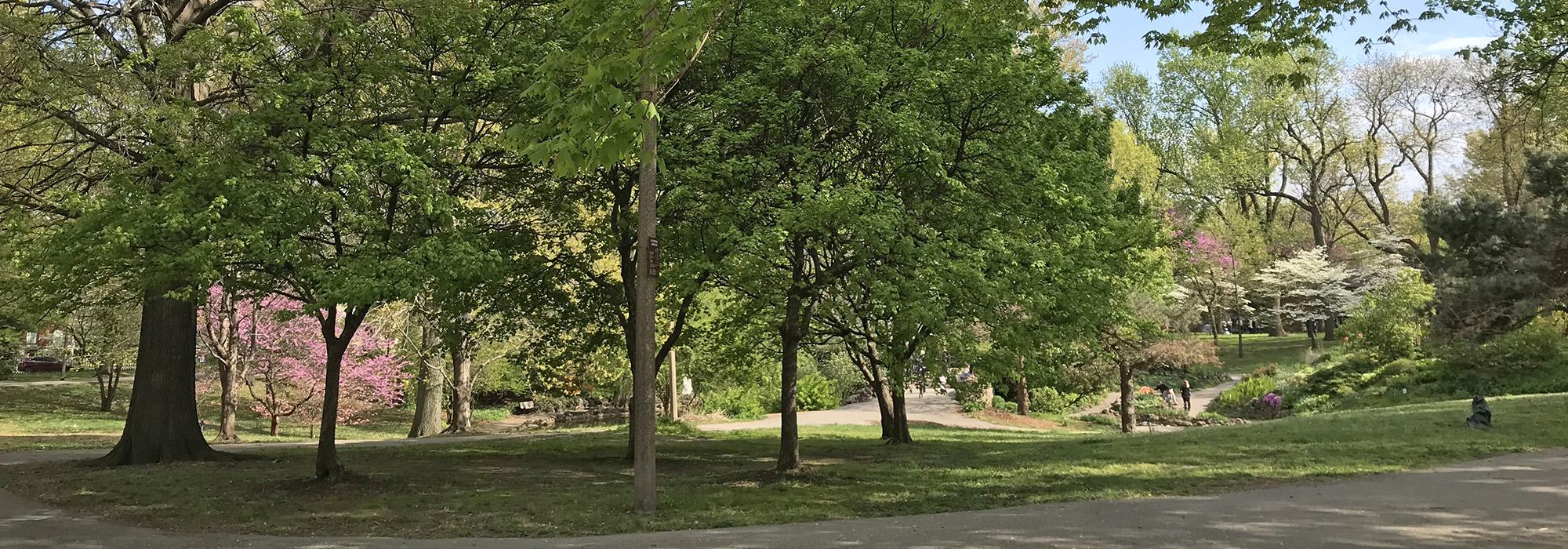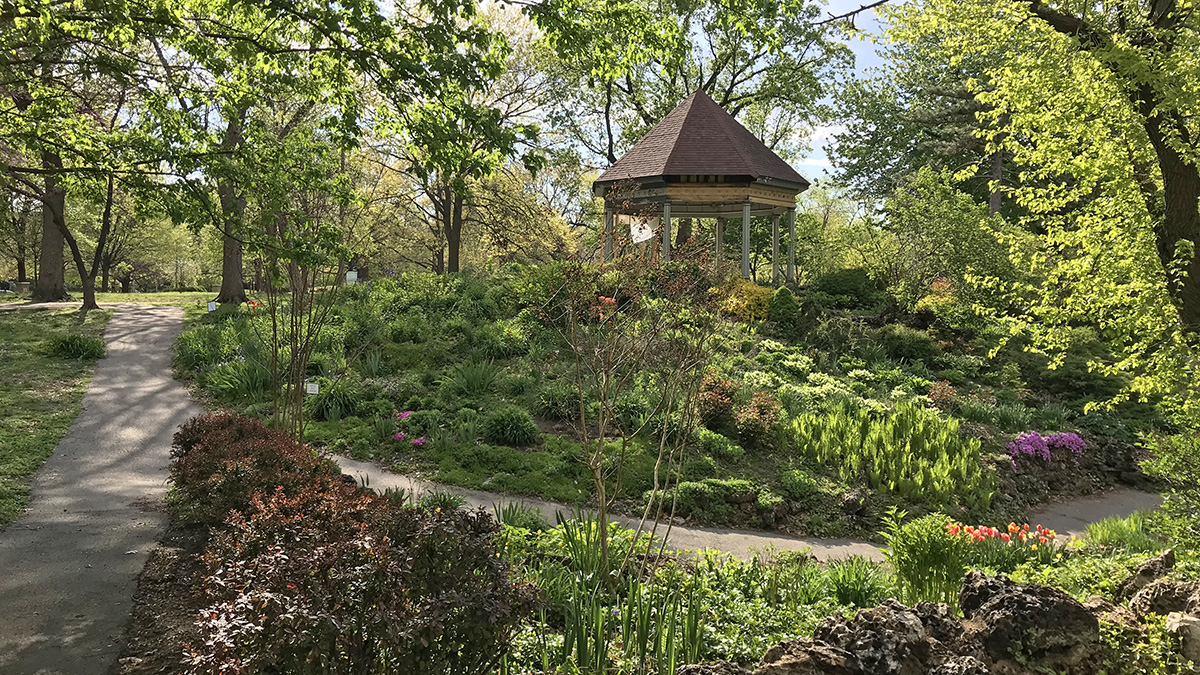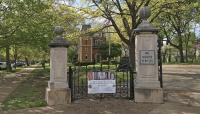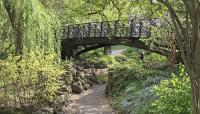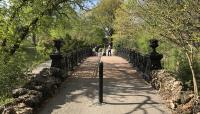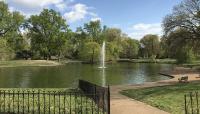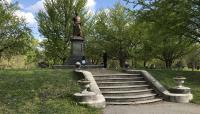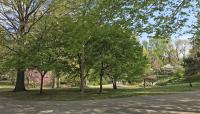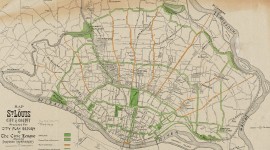Landscape Information
Originally part of the St. Louis Commons, this 30-acre site was designated a public square in 1836. With its dedication in 1851 the space became the city’s first park. Named for the Marquis de Lafayette, the park is bounded by Lafayette, Mississippi, Missouri, and Park Avenues and shares its name with the surrounding neighborhood. A Board of Improvement was established to administer the park upon its formation, and Maximilian Kern hired as superintendent. Kern improved the nearly barren tract, planting trees and installing numerous landscape features, including a lake, grotto, and paths. The popularity of the park necessitated the construction of a police substation in 1867. An iron fence surrounding the park was installed and statues of Senator Thomas Benton (1868) and George Washington (1869) were erected. Curvilinear paths shaded by canopy trees work with the site’s topographic variation, meandering from the entrances towards the park’s center. Amenities are concentrated in the southern half of the park, while an open lawn in the northwest corner houses an athletic field.
In 1896 a tornado damaged nearly all the park’s trees and destroyed structures. In the first two decades of the twentieth century, many park features were replaced or altered, though the path system, central lake, grotto, Benton and Washington statues, and ornate fencing remained intact. A Mediterranean boathouse was constructed in 1908, still extant. In the 1950s, the northwest corner of the park was regraded to accommodate athletic fields designed by Stuart M. Mertz & Associates landscape architects. The Lafayette Park Conservancy, founded in 2001, is housed in the former police substation, (now the Park House). Following a 2004 Master Plan undertaken by the City and the Conservancy with H3 Studio, rehabilitation efforts include the grotto and bridge (2012) and the boathouse (2014, now the Kern Lakeside Pavilion). A Tree Master Plan for Lafayette Park was prepared in 2016 by SWT Design. The gazebo, rebuilt several times, is now known as the Betsy Cook Pavilion and is embellished with native and tropical plants. Lafayette Park is a contributing feature of the Lafayette Square Historic District, listed in the National Register of Historic Places in 1972.



